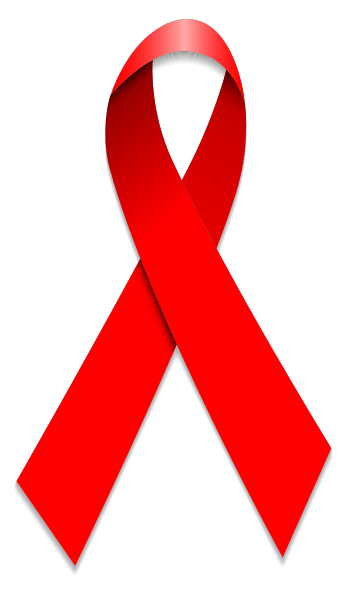 When our family moved from Lexington, KY, to Anniston, AL, to follow my husband’s call to become the pastor of a Presbyterian church, I had plans to stay at home with our two-year-old son. Little did I know that God would soon call me, too, into a new and unfamiliar land.
When our family moved from Lexington, KY, to Anniston, AL, to follow my husband’s call to become the pastor of a Presbyterian church, I had plans to stay at home with our two-year-old son. Little did I know that God would soon call me, too, into a new and unfamiliar land.
It began with a phone call. One minute, I was sitting at the kitchen table writing a letter to my mom, the next minute an unfamiliar voice was asking me if I might consider applying for the job of Executive Director for a newly opened out-patient medical clinic for patients with AIDS. A member of our church had given her my name, suggesting that her new minister’s wife, an unemployed social worker, might be willing to apply. “An age medical clinic?” I asked, not quite comprehending what this speaker with a strong southern drawl was asking of me. “Why, I really don’t know anything about AIDS,” was but one of my many negative replies. However, after finally agreeing to meet with the medical director and some members of the board, I agreed to give it a try.
In November of 1991, I was hired as the Executive Director of the first federally funded HIV/AIDS outpatient medical clinic to be located in rural America. Congress first enacted the Ryan White C.A.R.E. Act in 1990; by September of 1991, the first round of federal funding was awarded around the country. While the decision to fund an AIDS medical clinic in rural Alabama was something of a gamble, it soon became evident that the epicenter of new HIV infections in the United States was in the South. According to the U.S. Centers for Disease Control and Prevention, the South has the highest death rate due to HIV even though the region contains only a little more than a third of the country’s population. The key reason cited for this is stigma surrounding AIDS.
___________________________________________
Anytime the question is raised as to who does and who does not deserve access to healthcare, it seems to bring out the worst in us.
___________________________________________
The clinic in Oxford, AL, was initially located in a house on a beautiful, tree-lined street in a quiet neighborhood. A family home had been sold and converted into a chiropractor’s office and, now, into an AIDS clinic. When I started in November, there were 75 patients enrolled; by December, we were outgrowing the space and had to move.
If you build it they will come – and come they did, from the surrounding 14 rural counties. The only other medical clinics providing specialty care for patients diagnosed with AIDS were in Birmingham and Atlanta, both only an hour’s drive away from our location. However, both those clinics cared only for patients with private insurance, and both were already overflowing with patients residing within their county limits.

In 1991, Zidovudine (AZT) was the only FDA approved drug specifically for the treatment of AIDS. Most patients became resistant to AZT after about 2 years and then succumbed to the disease in horrifying ways. New drugs, it seemed, were always in the pipeline of development. Most were offered on a compassionate use basis prior to FDA approval. For many, the drugs never came fast enough and oftentimes they had terrible side effects to the point of resulting in death due to the medications. It was a calculated risk many took.
In those days the term ‘HIV’ was rarely mentioned. GRID – Gay Related Infectious Disease – was the first acronym used, and it described what most people believed to be true. When the acronym AIDS replaced GRID, few could tell you what the letters stood for, and most continued to believe it only affected gay people. By the time the actual virus that led to the depletion of the immune system in AIDS, HIV, was discovered, there were voices on the airwaves spreading rumors that HIV didn’t really exist. They insisted this disease was not brought on by a human immunodeficiency virus but rather by the hand of God, a government conspiracy, or mosquitoes.
When I began this work, the only way to confirm an AIDS diagnosis was to draw blood, send it to a lab in California, and wait approximately 2 weeks for results. In rural Alabama, most patients were diagnosed with AIDS in the hospital after being admitted due to a life threatening, AIDS-defining, illness such as Penumocystis pneumonia. The lucky ones survived only to learn what they already suspected; they had AIDS.
___________________________________________
In rural Alabama, most patients were diagnosed with AIDS in the hospital after being admitted due to a life threatening, AIDS-defining, illness such as Penumocystis pneumonia. The lucky ones survived only to learn what they already suspected; they had AIDS.
___________________________________________
Most patients knew immediately that surviving Penumocystis pneumonia did nothing to remove what many in our society considered to be a God-given death sentence for them, the homosexual, drug abusing, or sexually promiscuous “sinner” – or the child born to a mother who had unknowingly become infected from her gay husband who was trying his best to live life as a heterosexual.
 Wait a minute! What? Even this child? Even this mother who conceived this child with her legally married husband? Even this gay man pretending to be heterosexual husband, holding down a full-time job as a faculty member of a local university, this man who never missed a Sunday at church or even choir practice, who owned his own home, paid his bills on time, and was a member of a local community service organization? This man who, despite his sexual orientation, still loved his wife and child? God, our loving, forgiving, life-creating God was condemning this child, this woman, and this man to early, horrible deaths by cursing them with AIDS – all because this man was gay?
Wait a minute! What? Even this child? Even this mother who conceived this child with her legally married husband? Even this gay man pretending to be heterosexual husband, holding down a full-time job as a faculty member of a local university, this man who never missed a Sunday at church or even choir practice, who owned his own home, paid his bills on time, and was a member of a local community service organization? This man who, despite his sexual orientation, still loved his wife and child? God, our loving, forgiving, life-creating God was condemning this child, this woman, and this man to early, horrible deaths by cursing them with AIDS – all because this man was gay?
The saddest part is that many homosexual patients diagnosed with AIDS believed this about themselves, in large part due to their upbringing in churches that espoused such a message.
While I consider myself Christian, I oftentimes felt condemnation in my heart towards those who condemned people suffering from AIDS. I had by this time become educated about AIDS and lost my previous fears about contracting the disease from simply being around the patients. I had grown to love and respect many of them and their families. On one occasion I was asked how on earth I could bring myself to work at a medical clinic full of homosexuals who, according to the Bible, were ‘sinners!’ I could only reply that I felt right at home in a clinic full of ‘sinners.’ I feel pretty safe saying this was not the answer this person expected to hear from a minister’s wife, but it was the nicest thing I could think to say.
___________________________________________
While the world outside of the AIDS clinic often felt hostile and cruel, inside the clinic was my favorite place in the world. Life was precious, and we all knew it. We also knew that God was a loving and forgiving God.
___________________________________________
Most patients that came to the clinic were young, most were men (although women were by no means scarce!), and many were estranged from their birth families. Those who were able to do so moved far from home once they no longer felt capable of concealing their sexual orientation or their drug and alcohol habits. The depth of isolation felt by so many prior to their AIDS diagnosis was painful to hear. Much of their drug and alcohol abuse was an attempt to stifle feelings of self-loathing, loneliness, and confusion. Liquid courage – or courage from the tip of a needle – led them out of small towns and away from family to bigger places where they could become lost in the crowd and at the same time “find” themselves. AIDS swept through entire communities of these young people who had fled one bad situation only to be hit by another. Infected and no longer able to care for themselves, they now had to leave California, New York, New Orleans, Washington, D.C., etc. and return to what had been for them their not-so-sweet home Alabama. Back in their parents’ homes, living in the bedrooms of their youth, their moms were once again changing their sheets, even their diapers, and feeding them. This loss of self-sufficiency provided yet another reason for them to feel guilty! It was not uncommon to hear patients express a wish to have never been born.
 Keeping secrets requires a lot of energy. When the demands of daily life sap the energy right out of you, life often begins to unravel. Divorce among the parents of patients with AIDS was not uncommon. Many parents whose children returned home to die felt they had to keep secret even the fact that their “prodigal son” had returned home, even more so their diagnosis. Parents felt their own suffering, shame, and guilt about their decisions to keep secret the fact that their child looked like someone newly released from a Nazi concentration camp and carried an infectious and deadly sexually transmitted disease. Because of the stigma associated with AIDS, parents kept secret what they most want to scream and yell and cry aloud about to their ministers, their relatives, their friends, and their neighbors. Some said they wanted to scream, “My child is dying, I am afraid, I am sad, and please, God, spare my child and take me!” Instead, they kept silent about all these things and pondered them in their hearts.
Keeping secrets requires a lot of energy. When the demands of daily life sap the energy right out of you, life often begins to unravel. Divorce among the parents of patients with AIDS was not uncommon. Many parents whose children returned home to die felt they had to keep secret even the fact that their “prodigal son” had returned home, even more so their diagnosis. Parents felt their own suffering, shame, and guilt about their decisions to keep secret the fact that their child looked like someone newly released from a Nazi concentration camp and carried an infectious and deadly sexually transmitted disease. Because of the stigma associated with AIDS, parents kept secret what they most want to scream and yell and cry aloud about to their ministers, their relatives, their friends, and their neighbors. Some said they wanted to scream, “My child is dying, I am afraid, I am sad, and please, God, spare my child and take me!” Instead, they kept silent about all these things and pondered them in their hearts.
People often asked me if it was depressing to work in an AIDS clinic. At one time, approximately 14 patients died each month only to be replaced by 20 new ones. That was depressing. People wondered if the clinic was a type of hospice facility where patients lived and employees tended to them until they died. Our expressed lack of fear about contracting the disease caused some to wonder if clinic employees had AIDS ourselves. Others, like the youth minister who hopped out of the YMCA pool where we were both swimming laps and dropped his membership upon learning where I worked, truly believed I did. Myths and old wives tales about who did or did not have this disease and how one could and could not “catch” AIDS were plentiful. This was certainly sad – albeit sometimes comical! – but not really depressing.
___________________________________________
The largest HIV clinic in southern Alabama treats 1,200 patients scattered across a broad swath of the poorest, most rural part of the state. More than three-quarters of its patients have an income below the federal poverty level, which is $23,050 for a family of four. Only 10% of patients have private health insurance, and 40% have no insurance.
___________________________________________
While the world outside of the AIDS clinic often felt hostile and cruel, inside the clinic was my favorite place in the world. I felt blessed to share my day with the true heroes that worked there. The community room of the AIDS medical clinic was sacred space for both parents and children. Fears and joys were shared. Secrets need not be kept here. There was love and reconciliation all around. Life was precious, and we all knew it. We also knew that God was a loving and forgiving God. The Lord showed us sinners acts of mercy on a pretty regular basis and was in our midst to comfort us in our times of grief and sorrow.
 Some very brave patients volunteered to go with me when I was invited to speak to church youth groups and schools. It was important for people to be able to put a face on this terrible disease. While more and more people were beginning to hear about AIDS, many still clung to their belief that AIDS was a disease found only in large cities and confined to the gay, white, male population. Many had a “not in my back yard” denial tendency to think that like this could never happen to us. No words of mine, whether about the dangers of promiscuous sex, drug abuse, or lack of condom use could convince ‘invincible’ youth that, regardless of their sexual orientation, they too could contract AIDS. However, every time a patient close in age to those in the audience – often with little time left on this earth – accompanied me to a gathering, people’s eyes were opened and they believed. I try to believe that those who lost their lives while still so young saved other young lives from a fate such as theirs.
Some very brave patients volunteered to go with me when I was invited to speak to church youth groups and schools. It was important for people to be able to put a face on this terrible disease. While more and more people were beginning to hear about AIDS, many still clung to their belief that AIDS was a disease found only in large cities and confined to the gay, white, male population. Many had a “not in my back yard” denial tendency to think that like this could never happen to us. No words of mine, whether about the dangers of promiscuous sex, drug abuse, or lack of condom use could convince ‘invincible’ youth that, regardless of their sexual orientation, they too could contract AIDS. However, every time a patient close in age to those in the audience – often with little time left on this earth – accompanied me to a gathering, people’s eyes were opened and they believed. I try to believe that those who lost their lives while still so young saved other young lives from a fate such as theirs.
Our world in 2014 is drastically different than the one I experienced in 1991. Medical advances in the treatment have resulted in HIV disease being described as a chronic rather than deadly disease. Relatively few people now think of AIDS as a disease that only infects white, gay, males. Most people now know that they know someone who is living with or who has died from HIV disease. And while people certainly still die from complications related to AIDS, far more live with the complications of HIV disease. The pill burden has decreased and now, if one’s viral load is undetectable, doctor and lab visits may decrease in number as well.
Still, Living with a chronic illness, be it AIDS, diabetes, hepatitis, Crohns, or others is overwhelming to say the least. Add to this difficulty the cost of prescription medications, routine laboratory and doctor visits, time away from work, child rearing, and the continued shame, anger, fear, and isolation experienced by many if not most who are living with AIDS.
___________________________________________
When people do not have adequate insurance coverage or for whatever reason cannot afford to pay the full cost of their care and treatment, the debate turns to examining moral conduct, trying to determine if that person is “to blame” for a particular illness.
___________________________________________
In 2014, conversations about HIV/AIDS are far less about the fear of contracting AIDS and more about battle lines being drawn between those who can afford care and those who cannot. As Erin’s article has already demonstrated, there is a strong correlation between HIV infection and poverty. The largest HIV clinic in southern Alabama, Medical AIDS Outreach of Alabama (MAO), treats 1,200 patients scattered across a broad swath of the poorest, most rural part of the state. More than three-quarters of its patients have an income below the federal poverty level, which is $23,050 for a family of four. Only 10% of patients have private health insurance, and 40% have no insurance.
 Although today’s medical professionals no longer blame disease on spirits or divine wrath, there remain many groups whose illnesses are blamed on lifestyle and conduct. Conditions such as lung cancer, obesity, and AIDS have very different causes. Yet they have all been labeled at one time or another as illnesses which could be avoided with different behavior, an example of the tendency to create scapegoats as a misguided means of coping with the fear of illness.
Although today’s medical professionals no longer blame disease on spirits or divine wrath, there remain many groups whose illnesses are blamed on lifestyle and conduct. Conditions such as lung cancer, obesity, and AIDS have very different causes. Yet they have all been labeled at one time or another as illnesses which could be avoided with different behavior, an example of the tendency to create scapegoats as a misguided means of coping with the fear of illness.
For those who are independently wealthy or have adequate health insurance, no one seems concerned about how much is spent on healthcare, what procedures are performed, or how many medications are prescribed. However, when people do not have adequate insurance coverage or for whatever reason cannot afford to pay the full cost of their care and treatment, the debate turns to examining moral conduct, trying to determine if that person is “to blame” for a particular illness. Certainly being asked to share the burden of medical expenses is difficult. After all, providing healthcare is, among other things, a business. However, anytime the question is raised as to who does and who does not deserve access to healthcare, it seems to bring out the worst in us.
In Matthew’s Gospel, Jesus tells those who would follow him that our faith is measured by how we respond to the poor, sick, imprisoned, addicted, and least among us. May it be our daily challenge to respond to the imperative to do justice and seek mercy rather than judging, shaming, and blaming.
Lord, have mercy on us sinners.
*****
 AUTHOR BIO: Deborah Wade a member of Anchorage Presbyterian Church where her husband, Dee H. Wade, is the pastor. She has an MSW from the University of Kentucky and is currently employeed by the University of Louisville School of Dentistry as the Program Coordinator for Innovation and Community Engagement. This fall she plans to begin work towards a second master’s degree in Bioethics and Medical Humanities. She is a member of the Community Impact Cabinet for Metro United Way and on the Advisory Board for the UK College of Social Work. Deborah and her husband have one son, Seth, who is an undergraduate student at University of Louisville.
AUTHOR BIO: Deborah Wade a member of Anchorage Presbyterian Church where her husband, Dee H. Wade, is the pastor. She has an MSW from the University of Kentucky and is currently employeed by the University of Louisville School of Dentistry as the Program Coordinator for Innovation and Community Engagement. This fall she plans to begin work towards a second master’s degree in Bioethics and Medical Humanities. She is a member of the Community Impact Cabinet for Metro United Way and on the Advisory Board for the UK College of Social Work. Deborah and her husband have one son, Seth, who is an undergraduate student at University of Louisville.
Click here for the rest of this week’s articles.
Read more articles in this series.

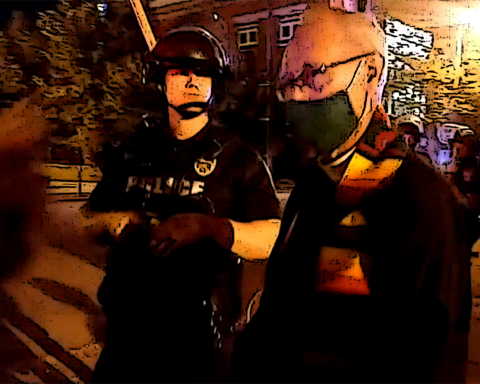
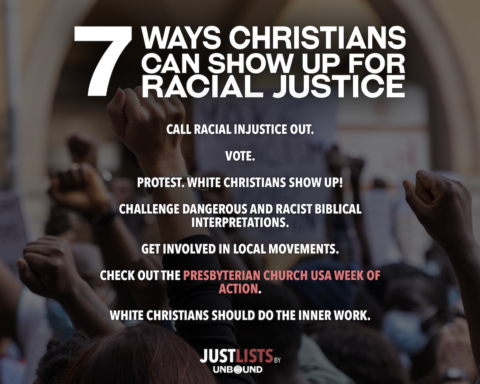
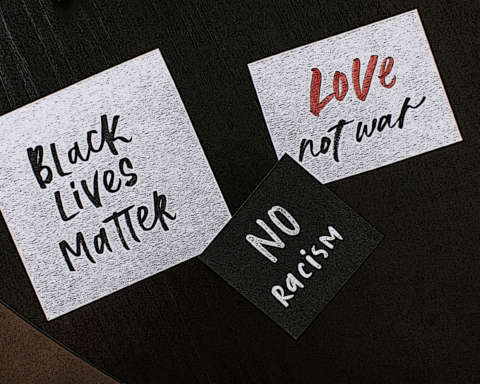
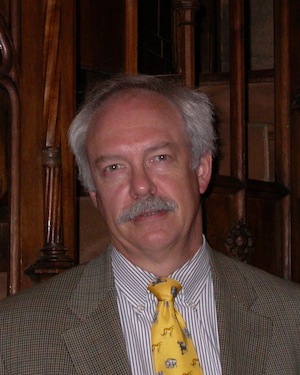

Unbound Social